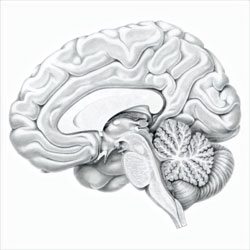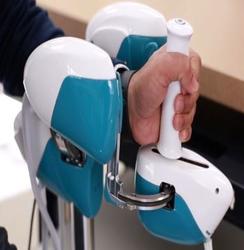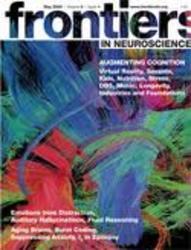Robot-Aided Assessment of Ankle and Wrist Proprioception in Stroke Survivors

A substantial number of people with stroke present with proprioceptive deficits, i.e. they show signs of impaired body awareness. This study seeks to understand the extent of proprioceptive impairment in the upper and lower limbs in individuals with stroke by evaluating ankle and wrist joint proprioceptive acuity using two robotic devices.
Encoding of Kinematics in Reorganized Brain Networks

This project investigates functional coupling of neural activity in the central nervous system particularly in individuals after cortical stroke. This is an international research project with researchers at the University Medical Center Hamburg (UKE Hamburg) in Germany. The project is supported by the Deutsche Forschungsgesellschaft (German Science Foundation).
Somatosensory Training for Stroke Patients

Proprioceptive dysfunction means that they do not or only imprecisely perceive the position and motion of limbs and body parts. As part of an NIH funded study, we investigate the efficacy of a specialized robot-aided sensory training on proprioceptive and motor function of the wrist in stroke survivors.
Completed
Dyad Motor Learning in Stroke Survivors

Dyad learning (dyad = a pair, two) is a form of learning where two learners practice in pairs. They typically alternate between physical practice (physically performing the task themselves) and observing the other person performing the task. Previous research shows that dyad learning leads to better learning outcomes and reduced practice time required to learn complex motor tasks during microsurgery or flight simulator training.
Systematic Review on the Effectiveness of Proprioceptive Training

Proprioceptive training has been promoted as an approach to enhance athletic performance and as a tool for sensorimotor rehabilitation. It is the objective of this study to systematically review recent empirical evidence to gain an understanding of which outcome measures are most sensitive, which populations may benefit most from proprioceptive training, and what are the effects on proprioceptive and motor systems.